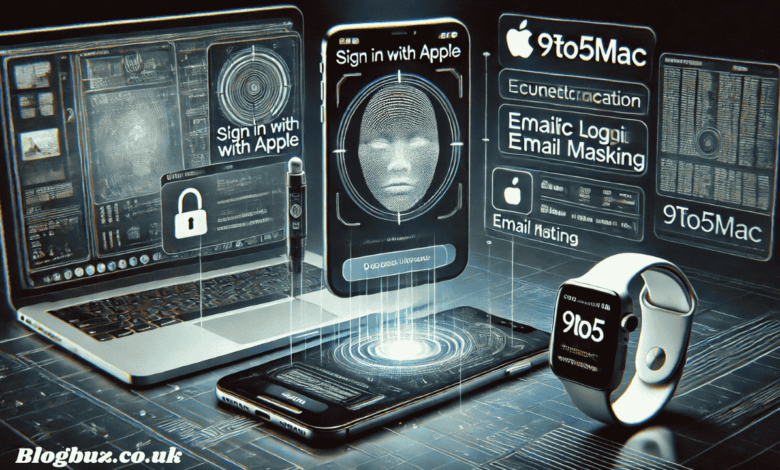
Introduction to Apple Sign Applemiller9to5mac
The term ‘apple sign applemiller9to5mac‘ represents a significant aspect of Apple’s user authentication processes. Apple Sign refers to a streamlined method for users to log in to various services using their Apple IDs, thus enhancing security while providing convenience. This feature allows users to engage with applications and websites more efficiently by minimizing the need to create separate accounts or remember numerous passwords. The implementation of Apple Sign streamlines the login experience across platforms by ensuring that authentication is quick and secure.
Within this context, the reference to applemiller9to5mac potentially highlights the contributions from the technology news platform 9to5Mac, known for delivering timely and detailed insights into Apple’s services and products. The applemiller tag may refer to specific features or discussions related to the Apple Sign service and its implications for users, developers, and the broader community. It represents a focal point around which news articles and updates are built, informing readers of the latest advancements and functionalities associated with Apple’s services.
Moreover, Apple Sign emphasizes user privacy and security, allowing individuals to choose whether to share personal information when signing in to apps. This aspect is critical in today’s digital landscape where data breaches and privacy concerns have become prevalent. The convenience offered by the apple sign applemiller9to5mac not only caters to the tech-savvy audience but also appeals to a broader demographic, making it easier for anyone to engage with digital environments while prioritizing their security. Thus, understanding the dynamics surrounding this term equips users with essential knowledge regarding their engagement with Apple’s ecosystem.
Features and Benefits of Apple Sign
The Apple Sign applemiller9to5mac represents a significant advancement in user authentication technology, primarily aimed at enhancing user experience, security, and convenience. One of its standout features is the seamless integration across Apple devices. Users can easily authenticate their identity using Face ID or Touch ID, which not only expedites the login process but also provides a high level of security that traditional passwords often lack. This integration means that once a user enables Apple Sign on one device, they can enjoy uniform access across all their Apple devices, further streamlining their tasks.
Privacy control is another critical advantage of Apple Sign. Unlike many conventional authentication methods that may involve the collection of personal information, Apple Sign minimizes data sharing. Apple’s commitment to user privacy ensures that users have control over their credentials; personal information is generally not stored on third-party servers. This aspect not only secures users’ sensitive information but also builds trust in using Apple Sign compared to other methods.
Accessibility is yet another feature that enhances the user experience with Apple Sign. The app is designed to accommodate a wide range of users, including those with disabilities. Features such as screen reading and voice commands enable all users to leverage Apple Sign efficiently, making it an inclusive option for identity verification.
In real-world applications, users have reported significant satisfaction with Apple Sign, noting that it has simplified their online shopping, banking, and communication processes. For instance, users of various online platforms appreciate the hassle-free experience of signing in quickly and securely without the need to remember complex passwords. Testimonials illustrate that the overall efficiency of transactions has increased, thus saving both time and effort, further showcasing the merit of adopting the Apple Sign applemiller9to5mac in everyday digital interactions.

How to Implement Apple Sign
Implementing Apple Sign within your application or personal project can enhance user experience by offering a seamless authentication solution. This guide contains step-by-step instructions that will assist both users and developers in this effort. The first step is to begin by creating an Apple Developer Account. This account is necessary to access the Apple Sign services and initiate your app registration.
Once your developer account is active, you can configure the app in the Apple Developer portal. Within the portal, navigate to “Certificates, IDs & Profiles,” and create an App ID specifically for your application. Ensure that you enable the “Sign in with Apple” feature for this App ID, allowing you to harness the capabilities of the apple sign applemiller9to5mac service.
Next, you will need to implement the appropriate code within your application. For web platforms, incorporating the Apple Sign button is straightforward; you can utilize the provided JavaScript API. For iOS and macOS applications, Apple provides native SDKs that simplify the process of embedding the sign-in feature. Utilize the frameworks provided by Apple to handle user credentials securely, which is paramount for safeguarding user information.
Upon successful integration, users can experience the signing-up process. Users simply click the “Sign in with Apple” button, and they will be prompted to log in using their Apple ID. During this process, users have the option to hide their email address, allowing Apple to manage email communication securely. For developers, ensure that you handle potential errors effectively; common issues may include network failures or user cancellations, which can be resolved through enhanced error handling within your application.
As you proceed with the implementation of the apple sign applemiller9to5mac feature, it is prudent to conduct thorough testing across different devices to uncover any compatibility issues. This proactive approach ensures that your user base enjoys a smooth sign-in experience. Should any challenges arise during implementation or usage, referring to the official Apple documentation will provide additional insights and solutions, facilitating a more efficient troubleshooting process.
Future Trends and Conclusion
The future of Apple Sign Applemiller9to5mac presents many exciting possibilities as Apple continues to innovate in the realm of digital authentication. With increasing concerns about data privacy, security, and user experience, Apple Sign is anticipated to undergo significant enhancements to better serve its users. One of the primary trends influencing digital authentication is the move towards more robust biometric security measures. Apple has already incorporated Face ID and Touch ID into its devices, and it is likely that Apple Sign will leverage these technologies to improve the verification process further.
Moreover, the integration of artificial intelligence and machine learning could lead to smarter and more intuitive authentication mechanisms. By analyzing user behavior and preferences, Apple Sign may become capable of preemptively recognizing users, thereby streamlining the sign-in process across various platforms. This adaptability to user needs could solidify Apple Sign’s position as a vital component of the Apple ecosystem.
Additionally, as remote work and online transactions continue to proliferate, the demand for secure and efficient authentication methods will rise. Apple Sign may evolve to cater to new use cases, allowing businesses and individuals to authenticate transactions seamlessly and securely, thereby fostering broader adoption of the technology.
In conclusion, the trajectory for Apple Sign Applemiller9to5mac looks promising. As Apple develops this innovative feature, the potential for improved security and enhanced user experience will likely attract new users while retaining existing ones. Key takeaways about Apple Sign include its expected advancements in biometric security, integration of AI technologies, and adaptation to the evolving tech landscape. Exploring and utilizing the functionalities of Apple Sign can significantly enhance user experience within the Apple ecosystem.






